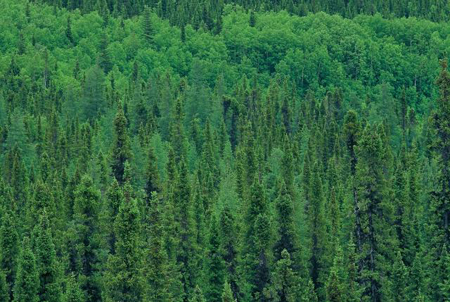
The carbon stored in Boreal trees, peat, and soil hasn't been adequately addressed in global climate talks
Credit: Garth Lenz
An important paper that just appeared in Science has major implications for conservation of birds, wildlife, forests, grasslands—really all natural habitats. The world is struggling to come up with ways to deal with global warming pollution coming from smokestacks and tailpipes. But the strategies so far basically don't really keep track of and deal with the loss of carbon in soil, peat, and trees. In fact this paper shows that given current ways of accounting for and limiting carbon emissions, we could lose biodiversity and make global warming worse at the same time.
How?
The authors model a scenario in which global land cover could go from something like 60% natural habitats today to 20% by the end of the century and unmanaged forest and grassland would virtually disappear, just from the incentives of current valuation of carbon in trading and taxation schemes.
That's not good for birds or wildlife or forests and certainly not for humans either. We need to make sure that we keep the massive store of carbon tucked safely away in places like the Boreal from being released by encouraging that large tracts of such habitat are made off limits to industrial disturbances that add it to earth's carbon cloud.
Here's a few quotes from the article which is entitled "Implications of Limiting CO2 Concentrations for Land Use and Energy" and appeared in Science Volume 324 published 29 May 2009.
"Several research studies have shown that the outcome of imposing a mitigation regime that only values carbon from energy and industrial sources creates incentives to increase bioenergy. As the use of bioenergy increases, land uses shift from food and fiber crops, forests, and unmanaged ecosystems to dedicated biomass crops. This in turn increases terrestrial carbon emissions globally—a perverse result of curbing energy and industrial emissions."
"Considerable research has investigated alternative mechanisms for pricing fossil fuel and industrial carbon, both explicitly through taxes or cap-and-trade regimes and implicitly through regulatory frameworks. Less attention has been placed on developing methods of associating carbon values with terrestrial systems, at least in part because they are less straightforward than those dealing with fossil fuel carbon emissions and because the cost of implementing emissions mitigation policies in terrestrial systems would probably be higher than in the energy system.
The development of methods for conveying carbon values to land-use decision-makers could substantially improve the environmental effectiveness of global carbon emissions limitation systems. Improved land-use management and improved agricultural practices could reduce upward pressure on crop prices and the cost of emissions mitigation. However, the allocation of scarce land resources to competing ends will remain a major challenge for the 21st century."

